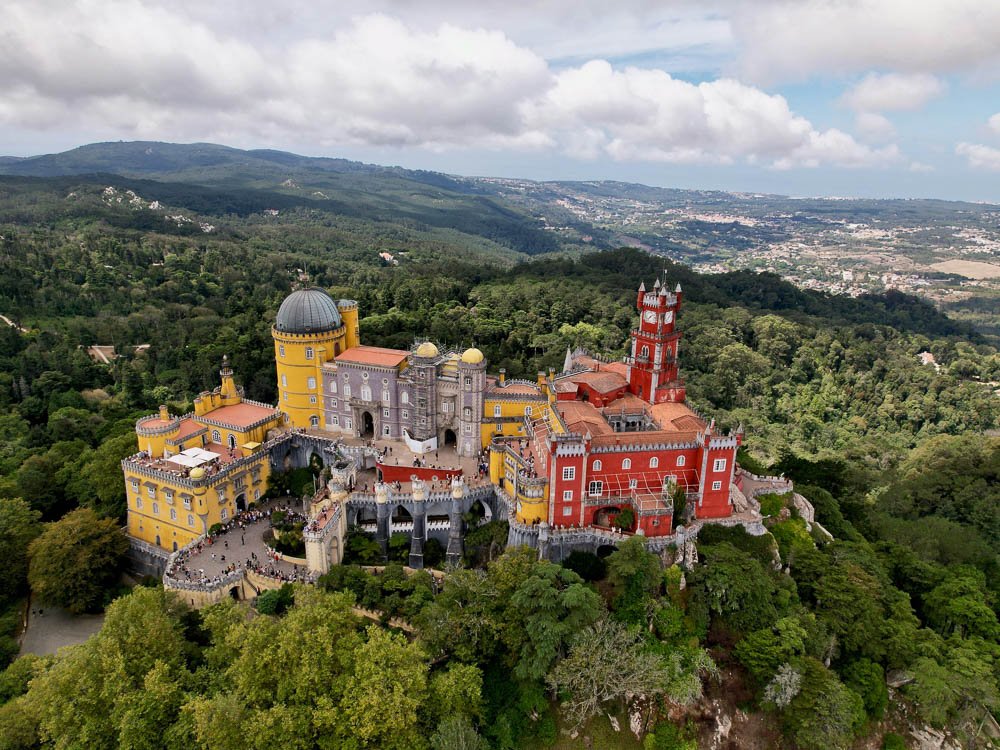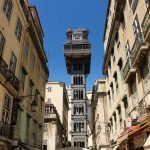Wondering what are the Lisbon palaces you simply cannot miss during your trip? I’ve got you covered! In this post, I’ll tell you everything about the most beautiful palaces in and near Lisbon.
When visiting Portugal’s capital, it’s impossible not to go to at least one of the many Lisbon palaces. Whether it’s in the city itself or in its surroundings, I don’t think I’ve ever met anyone who wasn’t thrilled to see these historical buildings.
After all, they’re much more than just opulent constructions: they’re a window into the lives of the past royals and their preferences. That’s why, in this post, I’ll introduce to you some of the most beautiful Lisbon palaces that you just can’t miss during your trip to Portugal.
So, without further ado, let’s get into it!

Index
1. Best Lisbon palaces
1.1. Ajuda National Palace
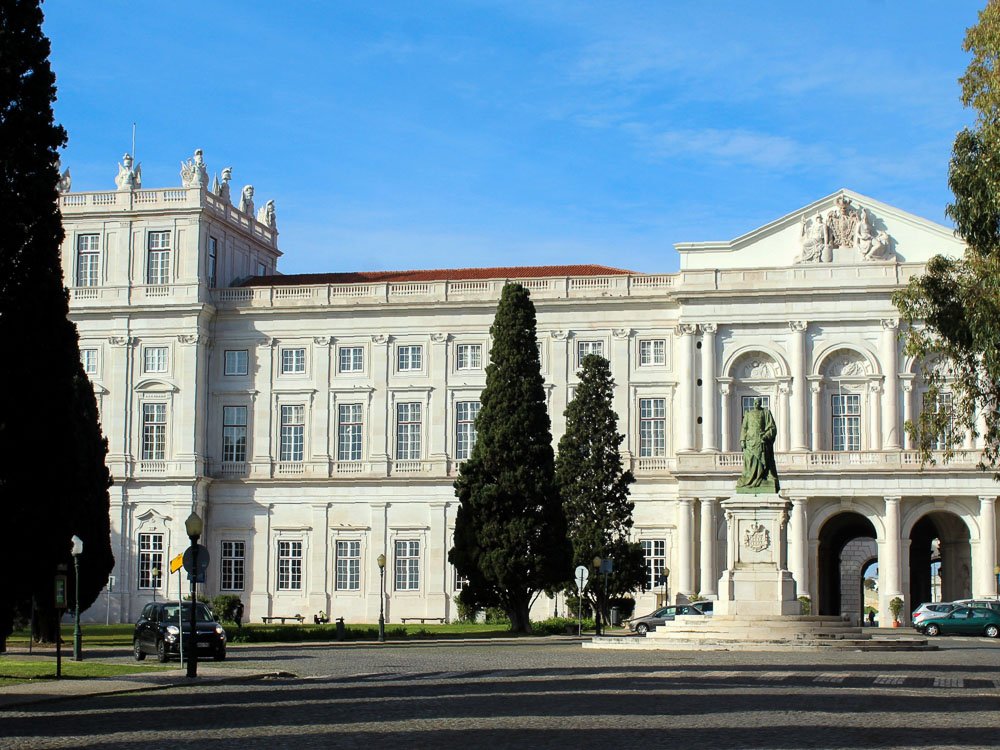
The Ajuda National Palace was built on the highest hill of Lisbon, after the 1755 earthquake that left the city in ruins. Originally, it was made out of wood to better withstand future disasters. However, it burned down in 1794, and plans for a more permanent palace began in 1796.
The construction was halted in 1807 due Napoleon’s invasion that caused the royal family to flee to Brazil, and the palace was never actually completed. Even though it’s only one-third of its planned size, it became the official royal residence in 1861.
The architecture features Neoclassical and Baroque elements, and the interior decoration is absolutely stunning, with many original items just as they were when the royals lived there. The palace is also home to the Royal Treasury Museum, which displays artifacts from Portugal’s monarchy.
Right next door is the Ajuda Botanical Garden, which was established at the same time as the palace and offers beautiful green spaces with views of the Tagus River. It’s definitely worth a visit! For more details, check out our post about Ajuda National Palace.
1.2. Belém Palace
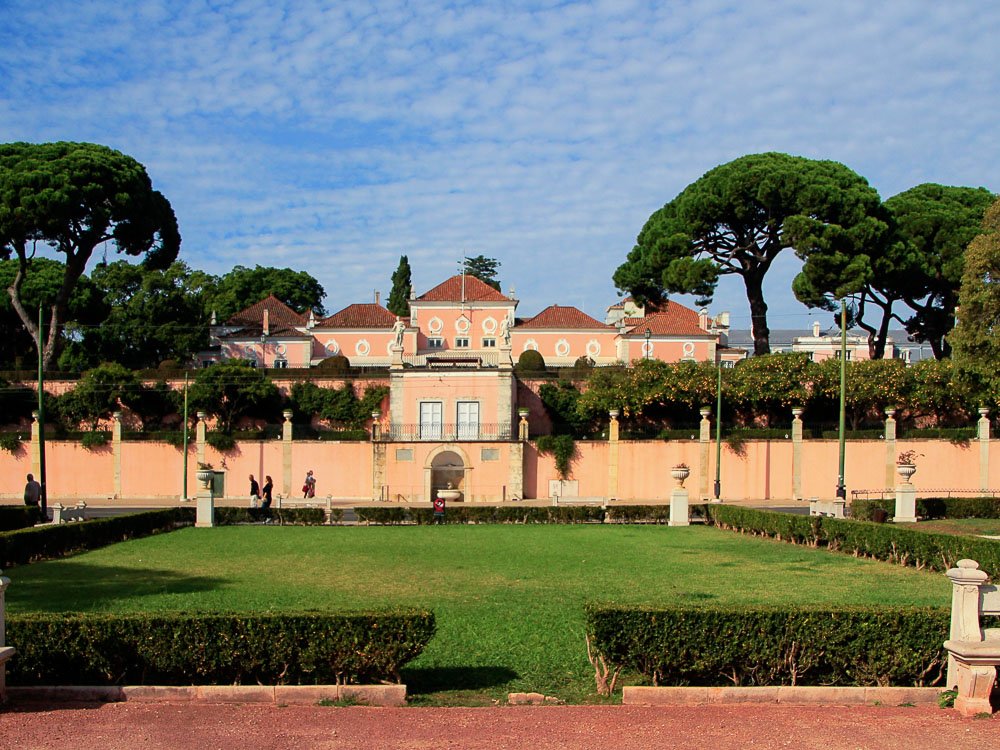
Located in the Belém district, the Belém Palace has a very long history. Originally built in the 16th century to serve as a summer house for the royalty, it survived the 1755 earthquake and became the royal residence in the 18th century.
In 1951, after the Portuguese monarchy was abolished in the early 20th century, the Belém Palace became the official residence and workplace of the President of Portugal and has since served this purpose.
A visit to this palace is absolutely fascinating, as it showcases a wonderful blend of history and modernity. While it’s been updated for its role in modern government, it still maintains its historical character, reflecting long-standing cultural traditions.
The public tours reveal features such as Queen Maria I’s lion cages, tile panels depicting mythological scenes, decorated wooden ceilings, marble fountains with lion heads and well-maintained gardens. Can you imagine how cool it would be to not only be the president of a country, but also get to work in a place like this?
1.3. Queluz National Palace
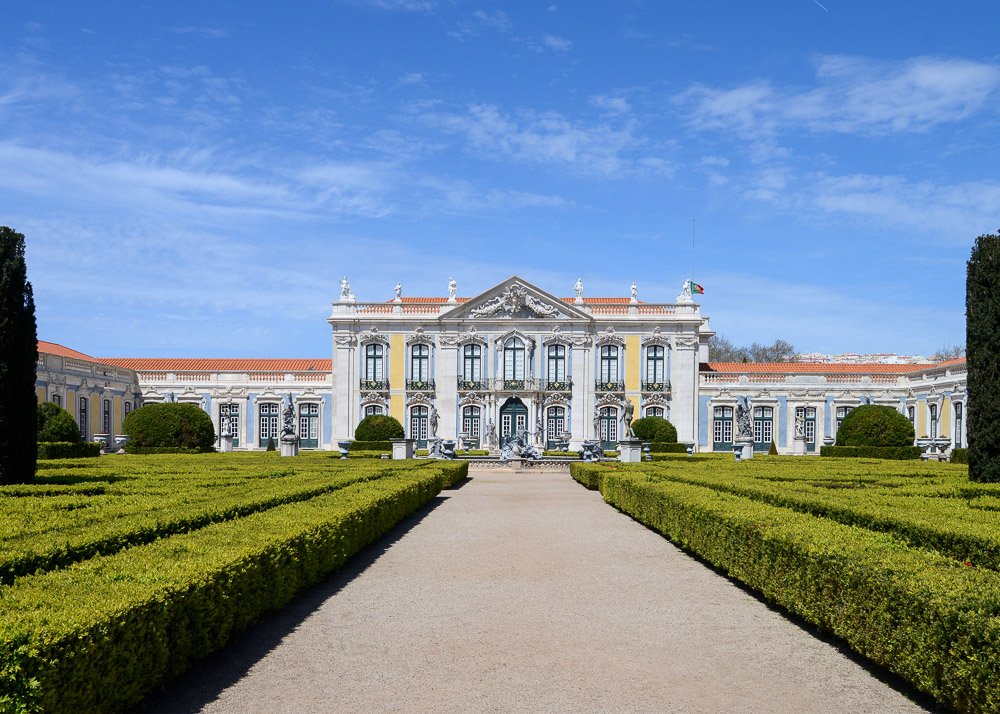
The National Palace of Queluz is located in Sintra, a city near Lisbon, and was built in 1747, funded by Portugal’s colonial income. It originally was intended to serve as a summer retreat for the royal family, but became the official royal residence in 1794, as Queen Maria’s mental health began to deteriorate.
The palace was designed in the Baroque and Rococo styles by architect Mateus Vicente de Oliveira, and, although it’s much smaller, it’s often compared to Versailles, with its impressive architecture, lush interiors, gold decorations, paintings, and azulejos.
In 1821, when the royal family returned to Portugal from their exile in Brazil, the king left Queluz Palace to Queen Carlota Joaquina, who lived there until her death. After that, the palace stopped being used as the primary royal residence.
Today, this is one of the most visited palaces by those interested in Portuguese history. Just a short trip away from Lisbon, visitors get to explore rooms filled with historical narratives and admire well-preserved details from its past. For more details, check out our post about Queluz National Palace.
1.4. Pena National Palace
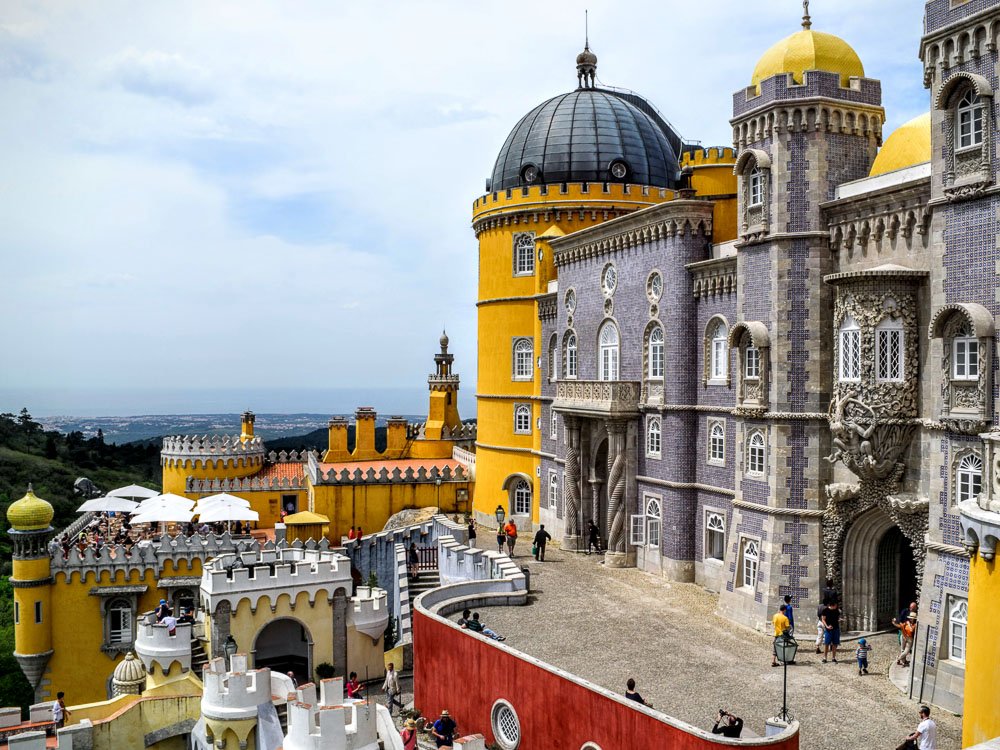
Located in the Sintra Mountains, the National Palace of Pena is recognized for its 19th-century Romantic architecture and colorful façade, which makes it seem straight out of a fairytale.
The palace has two main parts: the original Manueline convent and a newer wing added by King Ferdinand II. Its facades and terraces, along with well-preserved interiors, contribute to its status as one of Portugal’s seven wonders.
The interior of Pena National Palace is very well-maintained, showcasing decor from different eras. Visitors can see various rooms that provide insights into Portugal’s royal history, including a cloister in Manueline style and spaces like King Carlos’s chambers or Ferdinand II’s bedroom.
The design choices made by King Ferdinand and Queen Maria II were instrumental in shaping the palace’s appearance, blending Gothic, Renaissance, and Moorish elements into both exterior and interior designs.
Located near Lisbon, the palace is surrounded by forests with beautiful gardens that offer views over Sintra’s terrain and diverse plant life. It’s one of those palaces that you just have to visit when in Lisbon! For more details, check out our post about Ajuda National Palace.
1.5. National Palace of Sintra
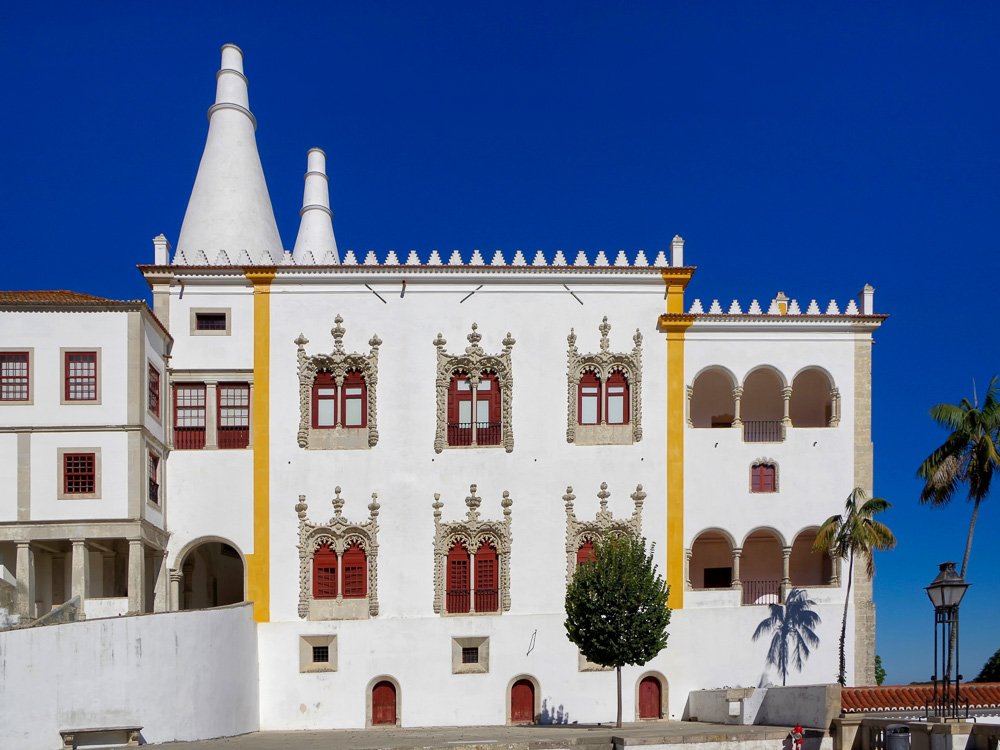
The National Palace of Sintra, also located in the town of Sintra, is recognized as one of Portugal’s most important and well-maintained medieval royal residences. Due to its strategic position, it was built as a Moorish fortress in the 9th century, and inhabited from the early 15th century to the late 19th century.
It was significantly reconstructed during the 14th and 15th centuries by King Dinis I and King John I, and presents several different architectural styles from different periods, such as Gothic, Manueline, Moorish, and Mudéjar, besides paintings, tile panels and original furniture.
The building contains terraces, a chapel, kitchens, quarters for the affairs of state, secretary and dispatches, along with 26 rooms that include: the Swan Room with its ceiling depicting swans, the Magpie Room which features magpies on its ceiling alluding to court gossip, and the Arab Room that showcases Moorish design elements.
After being frequently inhabited during the 19th century, it became a national monument in 1910 and was later added to UNESCO’S World Heritage Site list in 1995. Today, the National Palace of Sintra stands as one of Portugal’s most popular tourist destinations, attracting visitors with its rich history, stunning architecture, and panoramic views.
1.6. Monserrate Palace
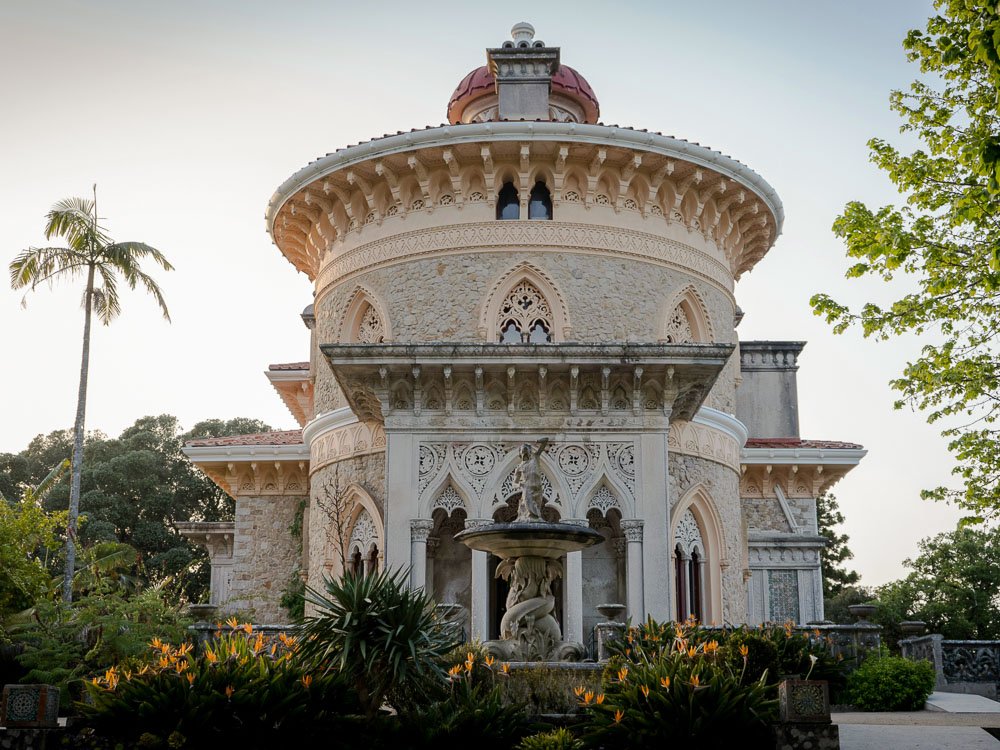
The Monserrate Palace may be one of the less visited Lisbon palaces, but that doesn’t mean it’s less worthy of a visit! In fact, I highly recommend that you go visit it before the hordes of tourists discover how great it is.
The site of Monserrate has a long history, dating back to an 11th-century chapel built by King Afonso Henriques. However, the current palace was actually built in the 19th century, during the Romantic period.
Construction began in 1858 when Sir Francis Cook, an English merchant and art collector, acquired the property. He then commissioned architect James Knowles Jr. to design the palace in a Romantic style, inspired by Islamic, Indian, and Gothic architecture.
The palace is surrounded by gardens notable for their design and botanical variety, featuring orchards with plant species from various parts of the globe. Lately, these gardens have been part of initiatives aimed at sustainability through renewable energy sources like hydroelectricity as well as solar and wind power.
If you’re interested in exploring Portugal’s less-known historical palaces, then Monserrate Palace should definitely be on your list!
2. Essential Travel Tips
Before visiting any of these Lisbon palaces, make sure to check their opening hours and ticket details. Besides that, I always recommend buying your tickets in advance, as some of these places tend to sell out.
Another thing you need to keep in mind is that you’ll be walking for hours when you visit these palaces, so remember to choose practical clothing and comfortable shoes. And don’t even think about skipping the sunscreen! The sun in Lisbon and its surroundings can be quite jarring during the summer, and it’s also important to stay hydrated.
Although Portugal is a safe country, you should also remember that tourist attractions are a hotspot for pickpockets, so always keep an eye on your belongings, especially when in crowded spots.
Another tip I can give you is: don’t be afraid to use the well-connected Portuguese public transportation system. You can use trams, buses, trains or metro, and they really do make getting to tourist attractions a lot easier!
Which of these Lisbon palaces do you want to visit the most?
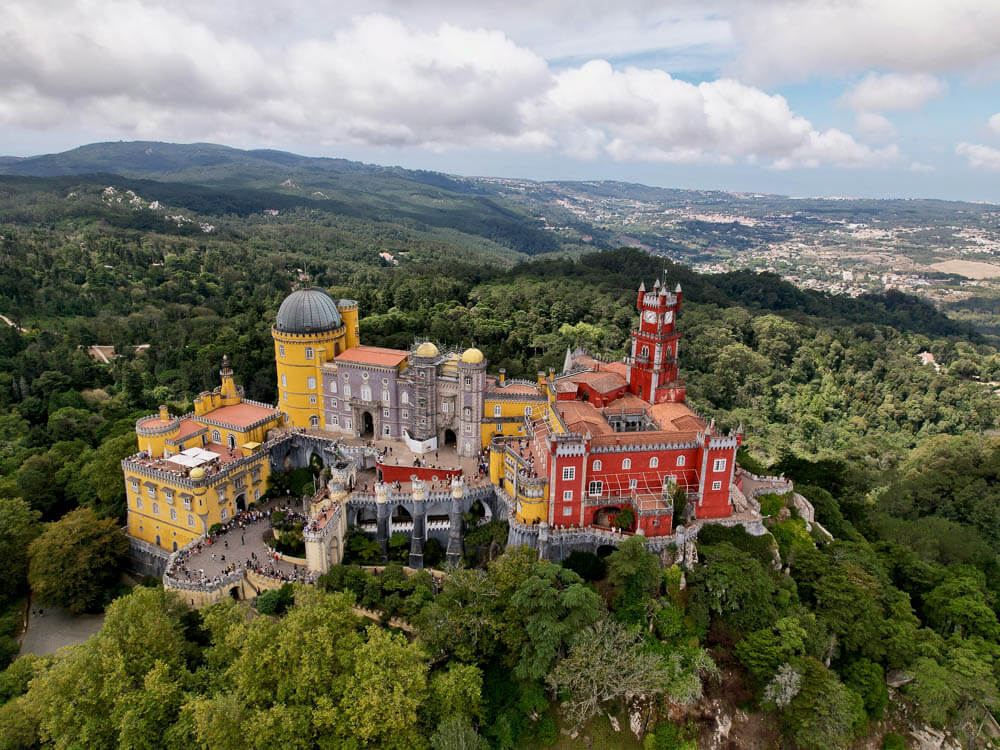
There are many Lisbon palaces worth visiting, each of them offering a unique look into Portugal’s royal history. Visiting them is not only an opportunity to see some stunning architecture and decoration, but also a chance to gain insight into the country’s heritage and past preferences.
Regardless of each one you choose to visit, you’ll be able to get a taste of the royal life and have an absolutely unforgettable experience among the luxurious items of past rulers.
Now, tell me, which one of these do you most want to visit?

